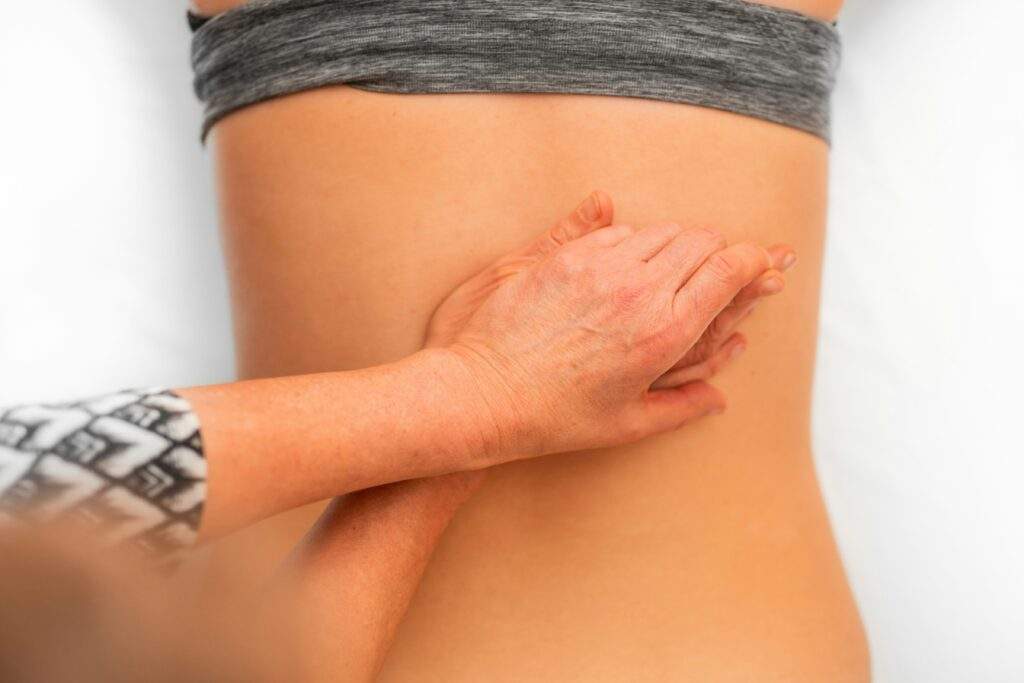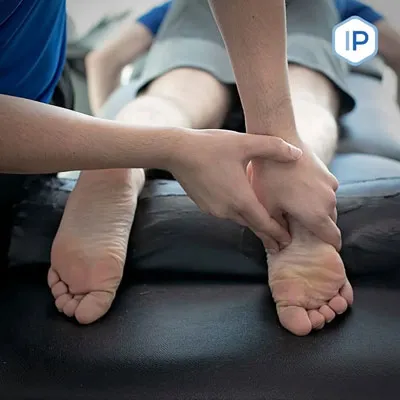Understanding and Managing Hip & Lower Back Pain Hip and lower back pain are two
of the most common complaints that can severely impact your daily life, making even
the simplest tasks challenging.
At Indergaard Physiotherapy, we understand how these pains can disrupt your
routine and are committed to helping you regain mobility and comfort through expert
care and personalised treatment plans.
What Is Hip Pain and What Causes It?
Hip pain can arise from a variety of factors, affecting not only the hip joint but also the
knee, lower back, and overall mobility.
Common causes include overuse, arthritis, injuries, and muscle imbalances.
Understanding these underlying factors is crucial for effective treatment, as the hip
plays a vital role in your body’s movement and power.
If you experience pain while walking, twisting, or bending at the hip, it can sometimes
radiate into your leg.
The hip’s essential function in movement means that any dysfunction can
significantly impair your daily activities, making it difficult to move comfortably.
The lower back, or lumbar region, is the area of the back that starts below the ribcage.
Almost everyone experiences low back pain at some point in their life. It’s one of the
leading causes of missed work and can range from a dull ache to a stabbing or shooting
sensation.
While low back pain often improves on its own, persistent pain might require
professional intervention.
Lower back pain can manifest as:
Dull Ache: A consistent, deep-seated pain.
Sharp or Shooting Sensation: Intense pain that may make it hard to move or
stand up straight.
Acute Pain: Sudden pain, often resulting from sports or heavy lifting. ��️♂️
Chronic Pain: Pain lasting more than three months, indicating a need for
professional care if it doesn’t improve within 72 hours.
Seek immediate medical attention if you experience back pain after a fall or injury, or if
it’s accompanied by bowel or bladder control problems, leg weakness, fever, or pain
when coughing or peeing.
These symptoms could indicate a more serious underlying condition.
Common Causes of Hip & Lower Back Pain
Various factors can contribute to hip and lower back pain, including:
Overuse or Injuries: Repeated strain or sudden injuries can lead to pain in these
areas.
Muscle Imbalances: Weak or tight muscles around the hip and lower back can
cause misalignment and pain.
Workplace Ergonomics: Jobs that involve heavy lifting, pulling, or sitting for long
periods can contribute to lower back pain. If you tend to slouch or your chair is
uncomfortable, the risk increases.
Carrying a heavy bag over one shoulder can also strain the lower back, as it has
to support the upper body and any additional weight.
At Indergaard Physiotherapy, our approach to treating hip and lower back pain
begins with a thorough assessment to understand how different parts of your body are
contributing to your pain.
Treatment may involve:
Hands-On Techniques: Manual therapy to alleviate pain and improve joint
mobility.
Rehabilitative Exercises: Exercises designed to strengthen and stretch the
muscles around the hip and lower back, promoting stability and reducing pain.
Shockwave Therapy: In certain cases, this advanced treatment can be highly
effective in accelerating recovery and reducing pain. ⚡
Maintaining an active lifestyle with regular exercises that target your hip and lower
back muscles is key to preventing future issues.
We also recommend:
Ergonomic Adjustments: Ensure your work environment supports proper posture and
reduces strain on your back and hips.
Mindful Movement: Pay attention to how you move during everyday activities to
avoid unnecessary strain.
Home Care for Lower Back Pain
If your back pain is due to muscle strain, it will usually improve on its own. You can
help speed up recovery by using a heating pad or taking warm baths to relieve pain.
However, prolonged bed rest is not recommended; studies show that more than a day
or two of bed rest can actually worsen the pain and reduce muscle tone.
Yoga for Lower Back Pain
If your lower back pain persists for more than three months, yoga might offer relief.
Studies have shown that people who practice yoga experience less back pain
and improved flexibility. However, it’s essential to receive expert instruction to avoid
injury.
If you’re experiencing persistent hip or lower back pain, or if it’s affecting your mobility
and quality of life, it’s time to consult with our team at Indergaard Physiotherapy.
We’re dedicated to diagnosing the root cause of your discomfort and developing a
personalised plan to get you back to living fully and pain-free. Don’t let hip or lower
back pain hold you back.
Contact Indergaard Physiotherapy today to schedule a consultation and start your
journey to a pain-free life.


